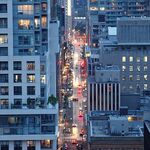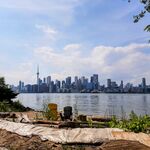I'd have to agree here that while Finch is well suited for LRT, the current design does not offer enough of a speed boost. The current Finch buses would suffice just fine the way they are to serve local demand. With the subway splitting the ridership, the LRT on the hydro corridor could be make to stop just at the major cross roads: Yonge, Bathurst, Dufferin, Keele, Jane, etc.. This would serve as a true rapid corridor to Humber College, but I would like to see a branch go directly to Pearson by following the hydro corridor as it turns south of Finch near Weston to Pearson. If the trip can be done in under 40mins, that would attract a lot of riders from North York area travelling to the airport.
With the current design, the trip would take longer than an hour, and that would not be useful for anyone starting their journey at Yonge St, as the buses could make that journey in the same time, thus not offering any time savings, except maybe during peak hours.
The one thing I like about the transit city plan is that it will enhance the street-scape by planing trees along the road and adding bike lanes. Something that wouldn't be done with the hydro corridor design. That alone could save lots of money or allow for a longer line.




